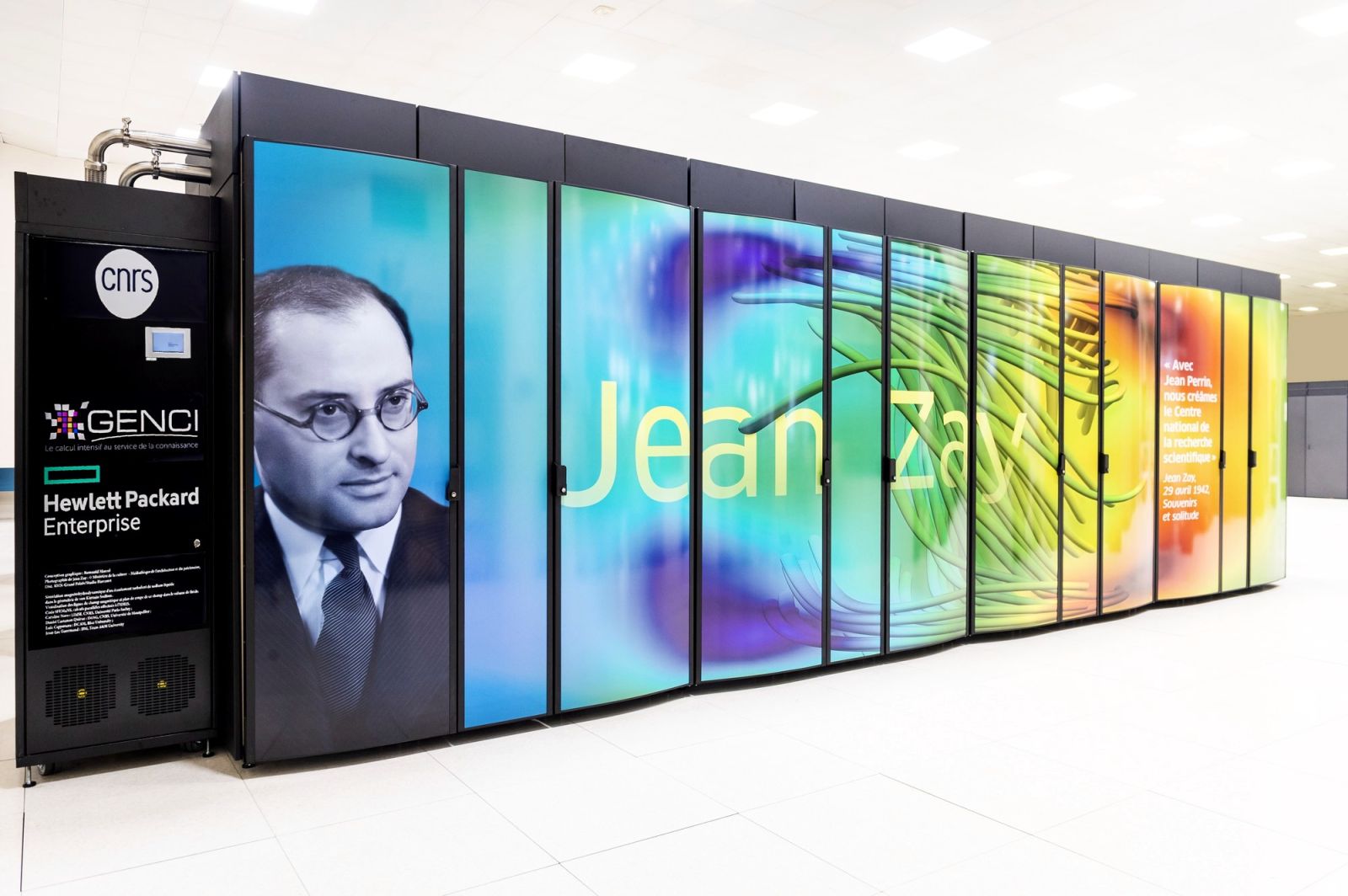Follow us on Google News (click on ☆)

The Jean Zay supercomputer.
Wikimedia image
Acquired by GENCI following a competitive dialogue procedure with European manufacturer Eviden, Jean Zay 4 now has 125.9 petaflops of 64-bit computing power, equivalent to 125.9 million billion operations per second. If all of humanity were to count at the rate of one operation per second, it would take 182 days to calculate what the Jean Zay supercomputer calculates in one second. The supercomputer's storage capacity has also been increased to reach around 100 petabytes.
Several thousand research projects have already used Jean Zay's resources free of charge, hence the importance of Jean Zay 4's resources for academic research teams, startups and large companies. Some projects are highly emblematic and enjoy international renown. To illustrate this enthusiasm, three scientific projects were presented at the inauguration:
- Polymathic, the project by François Lanusse, CNRS researcher at the Astrophysics, Instrumentation, Modeling laboratory (CNRS/CEA), applies deep learning and generative AI technologies to large-scale astronomical observations of the Universe;
- The project by startup Owkin led by research engineer Jean-Baptiste Schiratti aims to develop more robust and generalizable AI models for pathology detection: in particular, it seeks to better disentangle semantic content and texture in microscope images;
- The project by startup Pleias is led by its co-founder, Pierre-Carl Langlais. It offers an enhanced application of large language models, offline and with traceability of information sources compatible with the new European AI Act.
This version of the Jean Zay supercomputer with multiplied capabilities was produced by French and European manufacturer Eviden (Atos Group). In addition to its converged HPC/AI computing power, Jean Zay is among the most eco-efficient supercomputers in Europe thanks to the graphics processors (GPUs) supplied by Nvidia and the next-generation warm water cooling provided by Eviden. Moreover, the installation's residual heat is recovered to heat the equivalent of 1,500 homes on the Saclay plateau.
Thousands of projects will be able to benefit free of charge from this new tool for open research: language processing, multimodal computing, biomedical research, fundamental physics, climatology, new materials and new energies, autonomous vehicles, decision support, agriculture, culture... All these fields will benefit from the possibilities offered by the supercomputer, particularly for training, specialization or inference of foundation AI models.
A lever for accelerating French and European power in artificial intelligence, the Jean Zay supercomputer, thanks to the constant and exceptional support of technical teams, has seen the annual number of AI projects selected multiply by 20 in 5 years, rising from 72 in 2019 to over 1,400 in 2024. It is one of the most successful machines in Europe in the field of AI.
Jean Zay will also be an essential element of the future AI Factory France, a European project that will soon also be celebrated, bringing together GENCI, CNRS, Inria, CEA, AMIAD, CINES, France Universités, the nine AI Clusters, French Tech, HubFranceIA and Station-F. This project aims to provide computing infrastructure, support, training, education and expertise services to the French and European AI community.
Finally, as a wink or a mise en abyme, the innovative design of Jean Zay 4 was created by Obvious, a French collective recognized internationally, which creates works of art using AI technologies.
This inauguration took place in the presence of Antoine Petit, Chairman and CEO of CNRS, Philippe Lavocat, Chairman and CEO of GENCI, Bruno Bonnell, Secretary General for Investment, Jean-Luc Moullet, Director General for Research and Innovation at the Ministry of Higher Education and Research, and Hélène Mouchard-Zay, Jean Zay's daughter. On this occasion, Antoine Petit declared:
"I am proud to inaugurate the new extension of Jean Zay, the flagship of French supercomputers. France needs this innovative machine, at the cutting edge of the latest advances in AI, to meet major scientific challenges. And it is with determination that CNRS has been mobilizing its teams since 2018 to provide computing capacities and services to the entire national community."
Philippe Lavocat also emphasized:
"The Jean Zay 4 extension will give new energy to all academic and industrial researchers developing skills in artificial intelligence development, to solve major scientific and societal challenges, particularly with the help of generative AI models. Our bet was twofold: to have a powerful and technologically advanced machine and to bet on human resources in user support. Winning this bet is a very strong asset in networking with European machines. Jean Zay 4 responds to a national sovereignty challenge, and the union of our AI forces at European scale can still make a difference thanks to the enormous potential of our experts in this field."
About Jean Zay
The supercomputer was named in tribute to Jean Zay on the occasion of CNRS's eightieth anniversary in 2019. Minister of National Education and Fine Arts between June 1936 and September 1939, Jean Zay was assassinated on June 20, 1944 by the Milice. Having under his responsibility the Undersecretary of State for Research, held by Irène Joliot-Curie (from June to September 1936) then by Jean Perrin, he prepared with the latter all the steps that led to the creation of CNRS on October 19, 1939. Jean Zay entered the Panthéon on May 27, 2015.